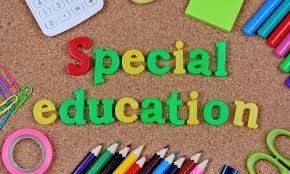How to determine if a 504 Plan is a good fit for your child.

An Individualized Educational Plan (IEP) and a 504 Plan are programs that allow students with disabilities to receive help if they qualify. The goal of both programs is to help students. Parents don’t get to choose which one their child will receive; all students must go through a prescribed process to qualify. Federal law protects both programs. If you want to find out if your child qualifies, you put that request in writing to begin the evaluation process. Even though you don’t get to decide which program applies to your child, it is important to understand both. Since these are complicated processes that are federally protected, it is hard to cover both in one article. This article will focus on Section 504 with limited comparisons to an IEP.
The law. The Individuals with Disabilities Act (IDEA) protects students right to a free appropriate public education and ensures that special education services are available to eligible children with disabilities. An Individualized Educational Plan (IEP) is the legal document that addresses the skills and services schools will provide. Oversight for IDEA is through the Department of Education.
The Rehabilitation Act of 1973 prohibits discrimination based on disability in any program conducted by a federal agency, programs receiving funds from the federal government, in federal employment, and employment of federal contractors. Section 504 of the act addresses any program receiving federal money, which would include public schools. A 504 Plan refers to the plan a school will make to ensure they are not discriminating against a person with a disability. Oversite of The Rehabilitation Act of 1973 is through the Office of Civil Rights.
How do these programs differ? As a former teacher, it is still sometimes hard to remember all the requirements for these programs. For me, the easiest way to differentiate them is to remember that an IEP is a plan for a child’s special education experience at school and a 504 Plan is a plan for how the school will provide support to remove barriers for a student with a disability. An IEP is a lengthy, written, structured and specific plan and a 504 Plan is short, not required to be written, and may just list accommodations.
If your child is struggling at school academically, mentally, or behaviorally you should ask for an evaluation. That evaluation determines what they need. Both an IEP and a 504 Plan refer to students with disabilities. Look past the term disability and determine what your child needs. When we hear the term disability, most people think of a physical disability, autism, blindness or hearing impairments. Each law defines the term disability differently. Denying your child the help they need because you are uncomfortable with the label “disability”, is doing your child a disservice.

Defining disability. IDEA (an IEP) focuses on special education services for students with disabilities and the rights that these students and their parents have. To qualify for an IEP, a child with a disability is evaluated and determined to have a specific disability and needs special education and related service because of that disability. There are 13 disability categories under IDEA, though districts can determine a child needs special education services even if they do not fit in those categories. Special education services can include physical, occupational, speech or behavioral therapy; one-on-one help from a tutor or aide; or instruction from special education teachers who work with students with unique needs.
Section 504 requires that an individual with a disability have a physical or mental impairment that substantially limits a major life activity or bodily function. There are no categories for disability nor are there any requirements that a student need special education services. They only need related services. A 504 Plan provides fair access to a learning environment. 504 Plans do not provide specialized instruction.
What is a 504 Plan? The purpose of The Rehabilitations Act of 1973 was to stop discrimination against people with disabilities. It is a federal civil rights law under the jurisdiction of the Office of Civil Rights. In a school setting, a 504 Plan provides supports for students. To qualify, a student must have a physical or mental impairment that limits one or more major life activities. If a child qualifies and needs accommodations (some may not) then the school creates a plan to provide those accommodations. School districts are required to provide all students with disabilities a free appropriate public education. If your child qualifies for an IEP, they will not have a 504 Plan because they will provide all accommodations in the IEP.
The Section 504 definition of physical and mental impairment also includes any mental disorder. The definition does not include all specific diseases and conditions that may be physical or mental impairments because of the difficulty of ensuring the completeness of such a list. If a student has behavior out of the norm for their age, schools can consider them for a 504 Plan. Sometimes, inappropriate behavior can result from an unaddressed disability.
How does a district decide who qualifies? There will be a 504 committee in your child’s district. Depending on the size of the district, they may do this at the school level or district level. People who know your child and people who understand the evaluation data are on the committee. The Section 504 regulatory provision 34 C.F.R. 104.35(c) requires that school districts draw from a variety of sources in the evaluation process so that they minimize the possibility of error. They document all information and all they consider significant factors related to the student’s learning process. Examples of information can be aptitude and achievement tests, teacher input, or physical condition. If the school determines a medical assessment is necessary, they must provide this at no cost to the family. Please understand, having an impairment is not a disability, the impairment must substantially limit learning or major life activities to be considered a disability under Section 504.
Districts must ignore stereotypes. The Office of Civil Rights has reported that many times, a district determines a student with good grades cannot qualify for a 504 Plan. They assume that you cannot have a disability if you are doing well academically. We should all pause and reflect on the bias in that thought process. Students with disabilities can be successful and that is an important mindset for schools to have. If a parent asks for an evaluation or a school suspects a diagnosis (for example, ADHD), they must consider a 504 evaluation. Grades alone cannot determine if a student has a disability.
Who do I contact if I want my child evaluated? To be safe, everyone and in writing. If you think your child should be evaluated, tell a counselor, school social worker, or an administrator. You can tell a classroom teacher but I don’t think this is the best way to do it, especially in secondary settings. Unless you are very specific about your need, a high school teacher will probably assume a counselor is already taking care of this. Any district with 15 or more employees is required to designate a Section 504 Coordinator (they can use different titles) to monitor, communicate, and assist with Section 504 procedures. Find the one for your district (or school) and contact them. If this does not help, then contact the special education administrator at the district level. Do not give up.
You don’t have an absolute right to have a 504 evaluation, but if a district suspects a need and does not provide an evaluation, they violate Section 504. If they do not evaluate your child, they must inform you of your right to challenge this decision. If you disagree, you can ask for a due process hearing that provides a review and allows for representation by an attorney. Districts do not want to go to a due process hearing, so they will evaluate your child if you notify them you will bring it that far.
IDEA (an IEP) has a specific timeline, does Section 504 have one? The short answer is, sort of. Section 504 does not specifically mention a timeframe for an evaluation. The Office of Civil Rights looks at the time frame for an IEP, which is 60 days, state requirements, and local district policy to determine if a district is reasonable in their time frame. Remember, that “clock” does not start until parents give consent for assessment. Always make sure you have all correspondences in writing in case you need to show a district is not complying with the law.
Special Education v services. This is so confusing. A student might not qualify for special education under IDEA (meaning they do not need an IEP) but they may qualify for services under Section 504. These services can include extra time on assignments or tests, designated seating, testing in a non-classroom setting, assistance from an aide for classroom activities. The service should help your child be successful in the classroom.
What does this mean in the classroom? A Section 504 Plan describes the aids and services a student needs and the setting in which to receive those services. Teachers must implement the Section 504 plans when the plan affects the teachers’ treatment of students for whom they are responsible. If the teachers do not implement the plans, the school district is in noncompliance with Section 504. The goal is for disabled students to be education with non-disabled students to the greatest extent that it is appropriate for the needs of students with disabilities.
The 504 Plan will let teachers know what they must do to help your child learn. If your child has ADHD, they may need their teacher to repeat instructions for them, provide notes, or break assignments into small chunks. A child with anxiety may test in an individual setting. If your child has a learning disability, they may need the teacher to provide a study guide, allow extended time on assignment or tests, or provide verbal instructions. They are accommodations that ensure the disability is not interfering with learning.
Whether it is through an IEP or a 504 Plan, your child should have equal access to a free public education. If a disability has affected your child’s educational success, reach out to the school and work together to help your child. Don’t let fear or intimidation stop you from asking questions or letting the school know if you do not think they are providing what your child needs.


